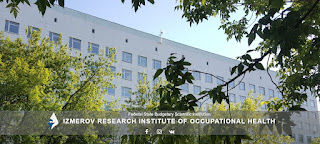Effetti della Risonanza Magnetica sul personale tecnico
Questo studio evidenzia la relazione tra potenza deìi emissione degli apparati per la risonanza ed effetti riportati da personale ospedaliero a contatto.
361 tecnici sono stati monitorati: si è evidenziata una chiara correlazione proporzionale alla potenza in Testa emessa: parliamo di persone 'normali' (non elettrosensibili) che hanno riportato vertigini e sapore metallico in bocca: sintomi ben conosciuti dagli elettrosensibili !
Immaginate quali possano essere gli effetti su un elettrosensibile infilato dentro alla macchina per la risonanza !

361 tecnici sono stati monitorati: si è evidenziata una chiara correlazione proporzionale alla potenza in Testa emessa: parliamo di persone 'normali' (non elettrosensibili) che hanno riportato vertigini e sapore metallico in bocca: sintomi ben conosciuti dagli elettrosensibili !
Immaginate quali possano essere gli effetti su un elettrosensibile infilato dentro alla macchina per la risonanza !
Occup Environ Med 2014;71:423-429 doi:10.1136/oemed-2013-101890
- Workplace
- Original article
Occupational exposure of healthcare and research staff to static magnetic stray fields from 1.5–7 Tesla MRI scanners is associated with reporting of transient symptoms
- Kristel Schaap1,
- Yvette Christopher-de Vries1,
- Catherine K Mason1,
- Frank de Vocht2,
- Lützen Portengen1,
- Hans Kromhout1
-Author Affiliations
- 1Division of Environmental Epidemiology, Institute for Risk Assessment Sciences, Utrecht University,Utrecht, The Netherlands
- 2Centre for Occupational and Environmental Health, Centre of Epidemiology, Institute of Population Health, Manchester Academic Health Sciences Centre, The University of Manchester, Manchester, UK
- Correspondence toProfessor Hans Kromhout, Institute for Risk Assessment Sciences, Utrecht University, PO Box 80178, Utrecht 3508 TD, The Netherlands; h.kromhout@uu.nl
- Received 27 September 2013
- Revised 26 February 2014
- Accepted 16 March 2014
- Published Online First 8 April 2014
Abstract
Objectives Limited
data is available about incidence of acute transient symptoms
associated with occupational exposure to static magnetic stray fields
from MRI scanners. We aimed to assess the incidence of these symptoms
among healthcare and research staff working with MRI scanners, and their
association with static magnetic field exposure.
Methods We
performed an observational study among 361 employees of 14 clinical and
research MRI facilities in The Netherlands. Each participant completed a
diary during one or more work shifts inside and/or outside the MRI
facility, reporting work activities and symptoms (from a list of
potentially MRI-related symptoms, complemented with unrelated symptoms)
experienced during a working day. We analysed 633 diaries. Exposure
categories were defined by strength and type of MRI scanner, using
non-MRI shifts as the reference category for statistical analysis.
Non-MRI shifts originated from MRI staff who also participated on MRI
days, as well as CT radiographers who never worked with MRI.
Results Varying
per exposure category, symptoms were reported during 16–39% of the MRI
work shifts. We observed a positive association between scanner strength
and reported symptoms among healthcare and research staff working with
closed-bore MRI scanners of 1.5 Tesla (T) and higher (1.5 T OR=1.88;
3.0 T OR=2.14; 7.0 T OR=4.17). This finding was mainly driven by
reporting of vertigo and metallic taste.
Conclusions The
results suggest an exposure-response association between exposure to
strong static magnetic fields (and associated motion-induced
time-varying magnetic fields) and reporting of transient symptoms on the
same day of exposure.


Commenti
Posta un commento